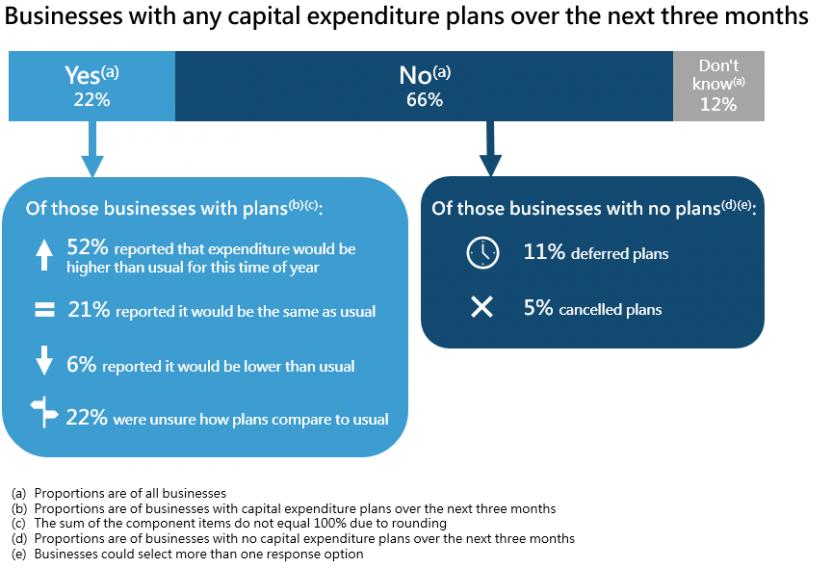Proportion of businesses with planned capital expenditure over the next three months, by industry(a)
[["Retail Trade","Arts and Recreation Services","Information Media and Telecommunications","Professional, Scientific and Technical Services","Mining","Manufacturing","Education and Training","Wholesale Trade","Accommodation and Food Services","Financial and Insurance Services","Electricity, Gas, Water and Waste Services","Rental, Hiring and Real Estate Services","Other Services","Construction","Health Care and Social Assistance","Transport, Postal and Warehousing","Administrative and Support Services"],[[41],[35],[34],[33],[31],[29],[29],[27],[25],[23],[21],[19],[19],[12],[11],[7],[7]]]
[]
[{"axis_id":"0","tick_interval":"","axis_min":"","axis_max":"","axis_title":"","precision":-1,"axis_units":"","tooltip_units":"","table_units":"","data_unit_prefix":"","data_unit_suffix":"","reverse_axis":false}][{"axis_id":"0","tick_interval":"5","axis_min":"","axis_max":"","axis_title":"%","precision":"","table_units":"(%)","tooltip_units":"(%)","axis_units":"","data_unit_prefix":"","data_unit_suffix":"","reverse_axis":false}]

